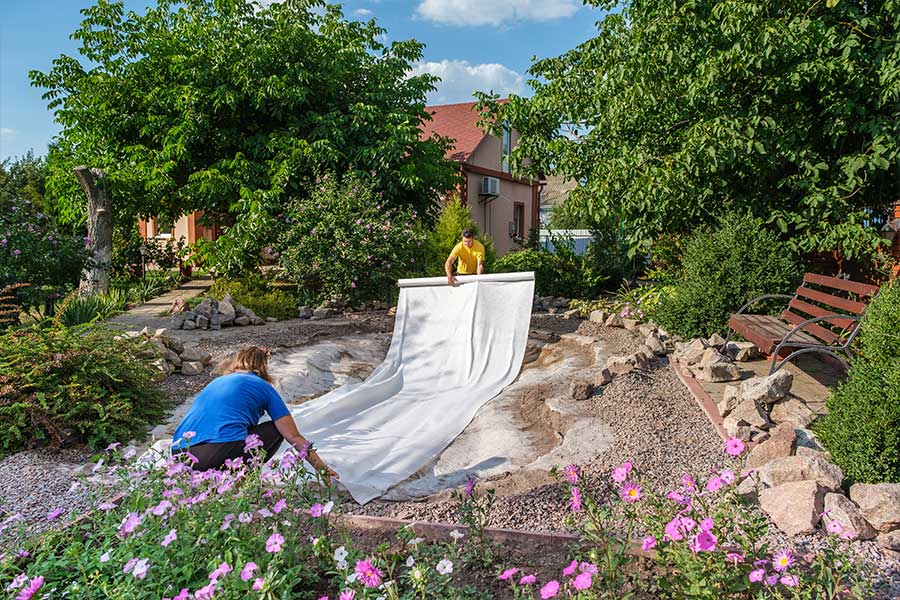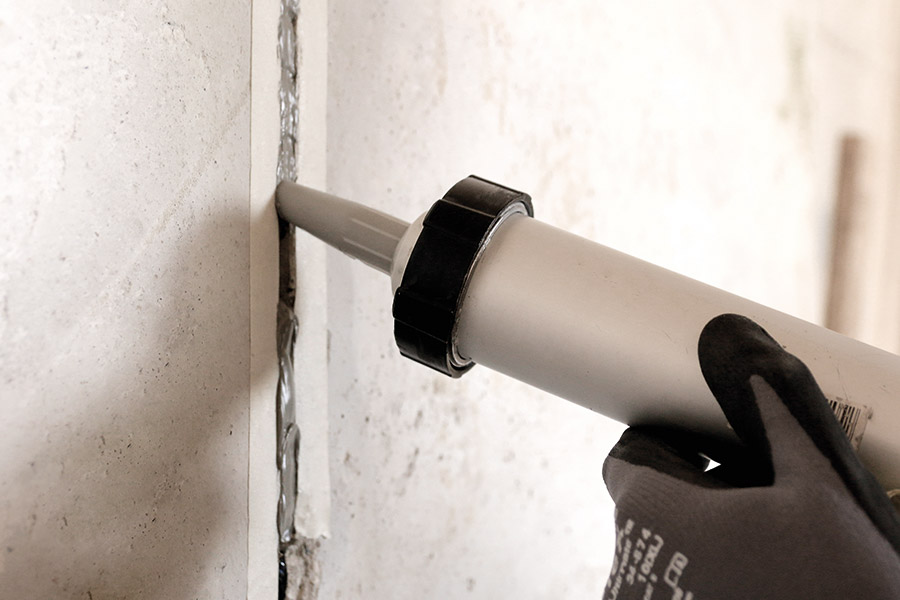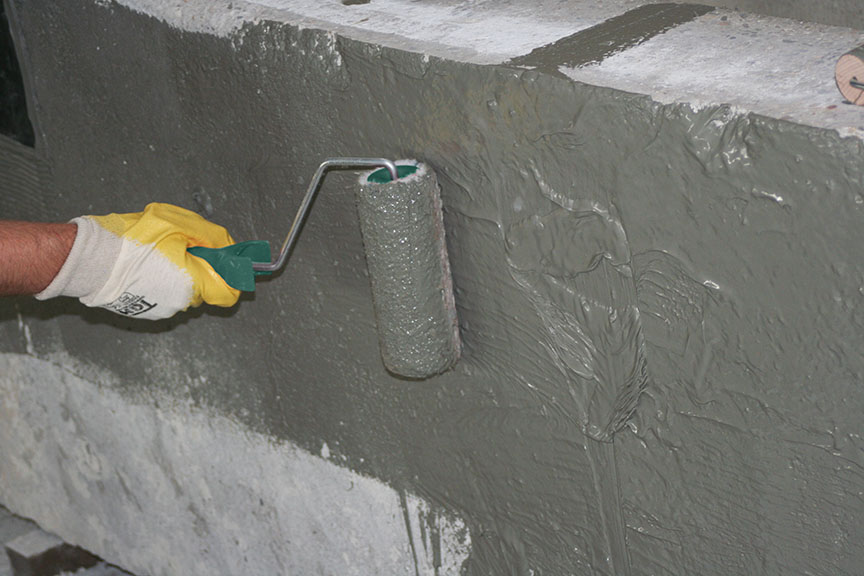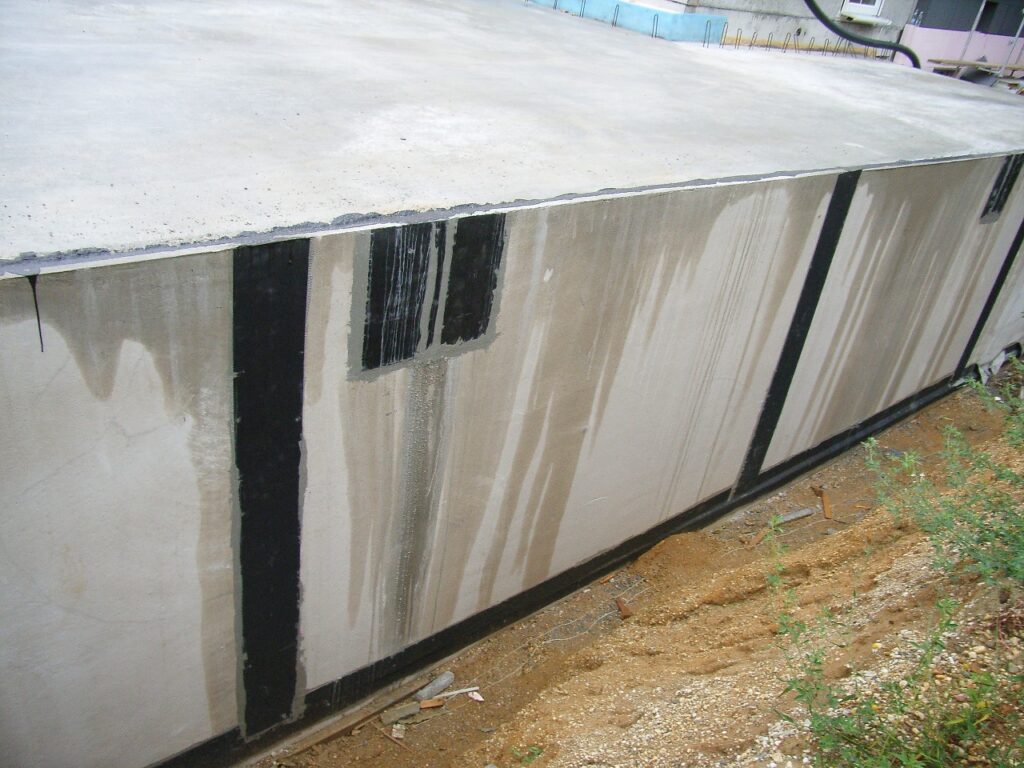Waterproofing the pond comprehensively
A pond in the garden is considered a true highlight and also offers a piece of relaxation. However, if you notice an increased loss of water in your garden pond, you can assume that leaks have formed there. In the event of major leaks, the edges of the pond, parts of the green spaces or even the foundations of adjacent houses can be washed out and sink. Therefore, value should be placed on good pond sealing as early as the construction phase. However, the pond waterproofing can also be retrofitted, whereby a permanent solution makes sense. For this purpose, B.T. innovation GmbH offers you reliable waterproofing materials to support you in your construction work.
Artificially created ponds in conservatories, gardens or in nature are usually sealed with a pond liner or with a liquid liner in the ground. Ponds made of natural stone or impermeable concrete, on the other hand, are sealed with joint sealants.
BT waterproofing products are excellent for this purpose:
- Reliably seal artificially created and natural ponds
- Permanently repair leaks such as cracks or holes in the pond liner.
- Replace the pond liner when it shows signs of ageing

Causes of leaks
Whether you have a foil pond, concrete pond or natural pond, certain signs of ageing will occur over time. These show up as leaks that allow large amounts of water to seep into the ground. Basically, in any type of pond, a crack or hole can enlarge and thus threaten the biological balance.
The liner pond is partly subject to construction errors, such as the incorrect placement of the pond liner edge. This must always protrude from the earth to avoid the capillary effect. In the case of liner ponds, however, subsidence in the substrate and stones can also lead to cracks or holes in the pond liner. Concrete ponds are known for their durability. Nevertheless, in cold winters with heavy frost or extreme cold, cracks and spalling from the concrete surface can occur. In addition, roots growing through the bottom of the various types of pond and problems in the area of inflow and outflow can be an obstacle.
BT solutions for sealing your pond
InnoElast® – Effective sealing of joints in natural stone or concrete ponds
The joint sealant InnoElast® Type 2 enables permanent sealing of joints between concrete, stones and other building components with solid, load-bearing substrates against water under pressure:
- Ponds made of natural stones or impermeable concrete.
- All repairs of joints or cracks.

Advantages of InnoElast® Type 2
- Solvent-free and low shrinkage
- Applicable on damp substrates from -3°C
- Weather and UV resistant, high resistance to chemicals
- Permanently elastic
- Up to 10% motion absorption
- Applicable without primer
- Pressure waterproof up to 0,48 bar
Instructions - Processing as a joint sealant
LiquidElast® – Large-area protection against damage to natural stone or concrete ponds
The liquid film LiquidElast® Type S can be applied in a double coat on solid load-bearing substrates like a paint for waterproofing:
- Ponds with a solid substrate, such as natural stone or concrete, can be sealed in this way.
- All repairs, even those of frost damage, succeed easily and quickly.
- Coated concrete parts are safe from water penetration and thus from frost damage.

LiquidElast® – Advantages
- Pressure waterproof up to 1,0 bar
- Wear resistant and resistant to many chemicals
- Applicable on damp substrates from 0°C
- Crack-bridging up to 5 mm
- Permanently elastic
Instructions - Processing as surface sealing
ProElast® – reliable repair of all pond types
With the ProElast® system of foil and InnoElast® foil adhesive, all types of pond, even those with a defective pond foil, can be permanently repaired.

ProElast® System – Advantages
- Pressure waterproof up to 2 bar
- Application on damp, ice-free substrate from 3°C
- Weather and UV resistant
- With InnoElast® type 2 = high chemical resistance
- Applicable without primer
Instructions - Processing as surface sealing
You should pay attention to
Are you trying to seal a pond yourself for the first time? Then here are a few more tips to ensure that you end up with a dense and long-lasting result.
Are there any leaks?
The search for the cause is not so easy with every type of pond. If your garden pond is home to fish and aquatic plants, evacuate them and give them a temporary home. In the case of a liner pond or a pond made of natural stones, for example, the water must be completely filled in and then the sinking water level observed. If this does not sink any further, the leak is above the current water level.
Furthermore, it should be noted that water loss is also dependent on external circumstances such as air temperature and intensity of the sun. For this reason, you should always keep an eye on the water level of your pond.
The right condition
To apply the waterproofing material, the substrate must be free of dust, grease and oils. Furthermore, the substrate must be damp but not wet with a visible film. Since all three waterproofing materials are moisture curing, the curing process of the material can be accelerated by high air temperatures with an absolute humidity. The InnoElast® and LiquidElast® type S waterproofing systems are also paint-compatible. As the joints and surfaces have to withstand a certain water pressure and frost damage can occur in winter, we recommend regular inspection of the ponds.